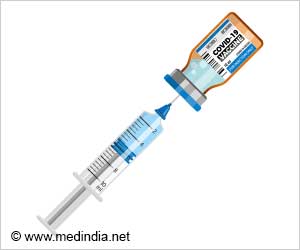“The development and distribution of COVID-19 vaccines has been a monumental undertaking,” says Ali Hajbabaie, corresponding author of the paper and an assistant professor of civil, construction and environmental engineering at NC State. “And while it’s been a remarkable accomplishment, there are also opportunities for us to learn how to improve the vaccine supply chain. What are the logistical challenges associated with transportation and distribution of vaccines for COVID-19? How can we study this? What can we learn from it?”
“For this work, we focused on collecting data regarding vaccine shipment and wastage,” says Leila Hajibabai, co-author of the paper and an assistant professor in NC State’s Edward P. Fitts Department of Industrial and Systems Engineering. “And we’re making that data publicly available to encourage the broader research community to analyze the data so that we can learn as much from it as possible. We also want to inspire other researchers to make their data publicly available in a timely manner.”
“We did some simple analyses in this paper to highlight the potential of the data, but we think there is much more to be done, and we want to tap into the expertise of other researchers to make the most of this information,” says Hajbabaie.
The researchers also collected data from the CDC on the amount of vaccine that was spoiled and had to be disposed of by awardees. This could be because a vial was broken, because it was stored at an improper temperature, because it was past its expiration date, and so on. Awardees are large-scale entities that are responsible for overseeing specific vaccination sites. There were 92 awardees nationally, and the researchers have wastage data from 58 of them. Examples of awardees include individual states, federal entities such as the Department of Defense, federal programs such as the Veterans Health Administration, and large-scale retailers such as CVS and Walgreens. Wastage data was reported on a semi-regular basis – often daily, but not always.
“This data was not made available outside of the CDC until we asked for it,” Hajbabaie says. “We were only able to get this data due to a collaboration with BuzzFeed, which obtained the data from CDC under a FOIA request.”
This paper includes the shipment and wastage data from Jan. 1, 2021 to March 31, 2021.
“However, we think it is possible that there will be significantly more data forthcoming,” Hajbabaie says. “For example, the CDC provided us with additional shipment data from December 2021. However, we received that too recently to include in this paper.”
“In the paper, we outline some directions for future work, such as how to account for vaccine hesitancy in order to optimize the supply chain and distribution network for vaccination moving forward,” Hajibabai says. “For example, we can estimate the demand and waste accordingly and make recommendations to seamlessly schedule patients and reduce wastage.
“But it’s not an exhaustive list. While we are continuing to work with this data set ourselves, we’re sure there are things we haven’t thought of. That’s one of the reasons we think it is important for the research community to make its data publicly available in a timely manner – it will allow all of us to make progress on real-world challenges more quickly.”
Source: Eurekalert



